Iran
Things to DO
Tehran
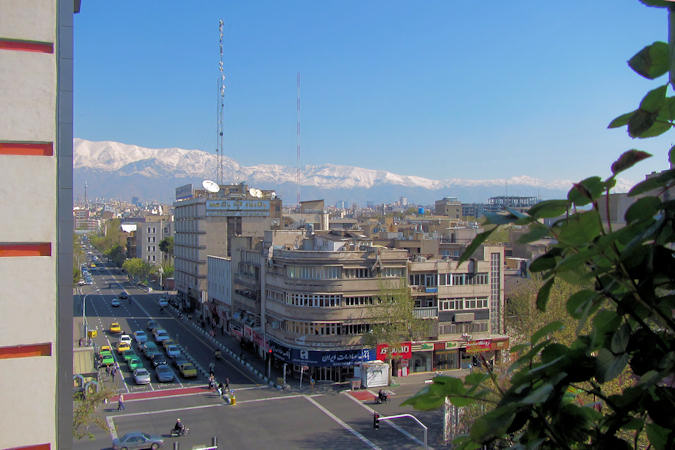 |
|||||
Looking at the sprawl of modern Tehran spreading up into the Alborz foothills, it is difficult to believe that before 1795,
when it became the Qajar capital, it was an insignificant village.
By 1850 the city's population had escalated to around 90.000, enjoying its improved water supply, extended bazaars and newly built
caravanserais. Since then figures have soared; a conservative estimate in 1992 was over 6.5 million in the immediate centre with half
again in the outlying suburbs.
According to the 2011 census the population of Tehran is over 12 million, which is approximately one-sixth of the country's total figure.
The inner areas of the city are home to around 50 colleges and universities, making it the most dynamic student city in the country.
Many tourist shun Tehran and proceed directly to the historical south, but the Iranian capital is a wonderfully diverse and vast city
with vibrant café culture and pleasant parks scattered around the city perimeter.
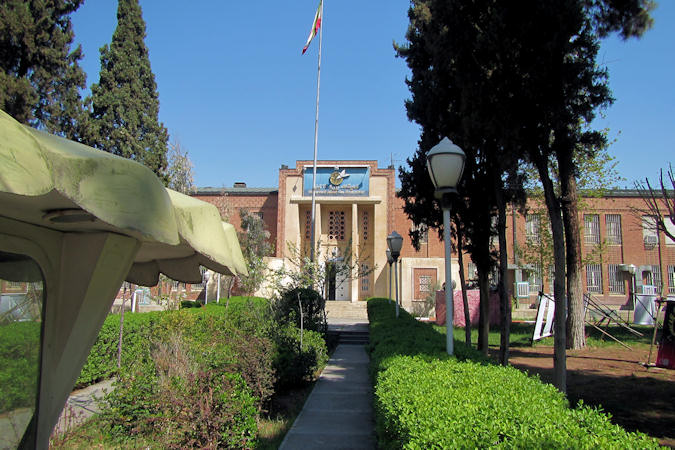 |
|||||
The Embassy of the United States of America in Tehran was designed in 1948 by the architect Ides van der Gracht. It was a long,
low two-story brick building, similar to American high schools built in the 1930s and 1940s.
The US diplomatic mission has been defunct and the building has not been used by the U.S. since the Iran hostage crisis of 1979.
The name currently given to the compound by many Iranians is variously translated as "espionage den" and "nest of spies".
Tehran Museum of Contemporary Art, is among the largest art museums in Tehran and Iran. It has collections of more than 3.000 items
that include 19th and 20th century's world-class European and American paintings, prints, drawings and sculptures.
The museum was designed by Iranian architect and cousin of the queen, Kamran Diba, who employed elements from traditional Persian
architecture and was inaugurated in 1977 by Empress Farah Pahlavi in 1977, just two years before the 1979 Revolution.
Hamadan
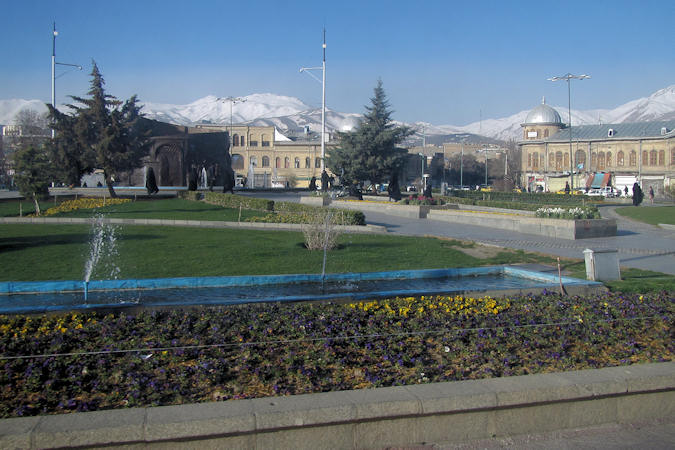 |
|||||
Known in classical times as Ecbatana, Hamadan was one of the ancient world’s greatest cities. Pitifully little remains from
antiquity, but significant parts of the city centre are given over to excavations, and there's a scattering of historical curiosities.
In the centre of the city you can find the Imamzadeh-ye Abdollah one of the religious and cultural places in Hamadan
The Mausoleum of Avicenna was buit in 1953 by the Iranian Monuments Society on the occasion of the philosopher's millenial birth
anniversary.
Avicenna (born 980 AD) fled from his enemies at court in Bukhara (Uzbekistan), arriving in Hamadan in about 1015 to practise as a doctor.
Most of his 130 or so books have been lost but fragments remain to show he wrote knowledgeably on economics, poetry, philosophy and music
as well as physics, mathematic and astronomy.
His book "Book of Healing" and Canon of Medicine"became the standart medical textbooks in Europe until mid 17th century.
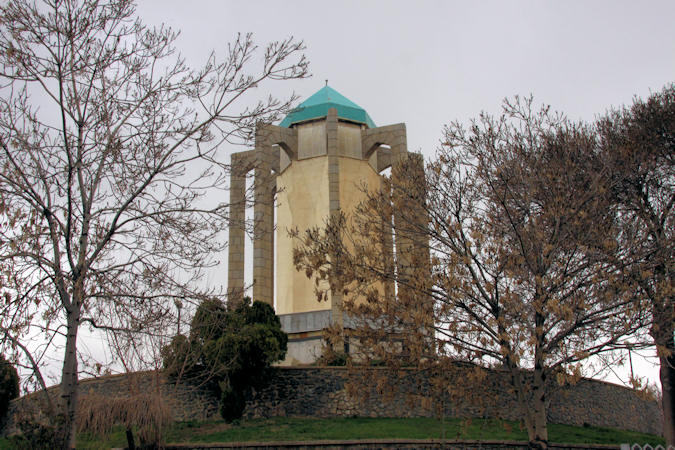 |
|||||
Another modern tomb (1951, repaired 1970) set in a pleasant garden commemorates Baba Taher, author of metaphysical works
but more renowed for his passionate mystical poetic quatrains which, it was said, could melt the snow of Alvand.
No-one is sure when he lived or died other than it was sometimes between 900 and 1300 AD but his Sufi love poetry remains a favorite and
is still often set to music.
Mausoleum of Esther and Mordechai marks the traditional location of the graves of Mordechai and Esther, two cousins who played a
pivitol role in the Book of Esther (also known as the Megillah).
The saga of Mordechai and Esther form the basis for the Jewish celibration of "Purim"; hence, the site is of deep historical
significance to Iranian Jews and the wider Jewish community.
Mordechai and Esther lived during the rule of Ahasuerus, a Persian king who is also identified as Artaxerxes (possibly Artaxerxes II,
who reigned from 404 to 358 BC).
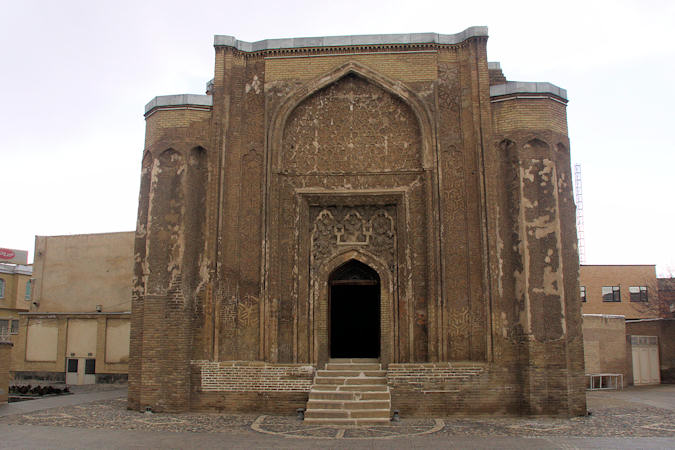 |
|||||
The square building of the Gonbad-e Alavian dates back to the Seljuk period (12th century AD). It was originally built as a
mosque by the Alavian family, complete with minarets and a green dome, though it was later transformed into a family mausoleum by adding
a crypt to it.
The interior decoration includes exquisite carved stucco and brick panelsand the exterior decoration features inscriptions in Kufic script
that were added in the Ilkhanid period (late 13th century).
The crypt is accessible through a narrow staircase at the rear of the building, which leads to a large stone sarcophagus at the center of
a vaulted chamber.
About 10 km west of Hamadan is Ganj Nameh ("Book of Treasures". High up on a rock face, looking north, are two large panels
carrying Achaemenid trilingual inscriptions recording the victories and lineage of Darius the Great (522–486 BC) and his son
Xerxes I (486–465 BC) and giving thanks to the Zoroastrian deity Ahura Mazda.
The area is a popular weekend and holiday spot with beautiful nature, a waterfall, restaurants and a cable car if you wish to spend half a day around here.
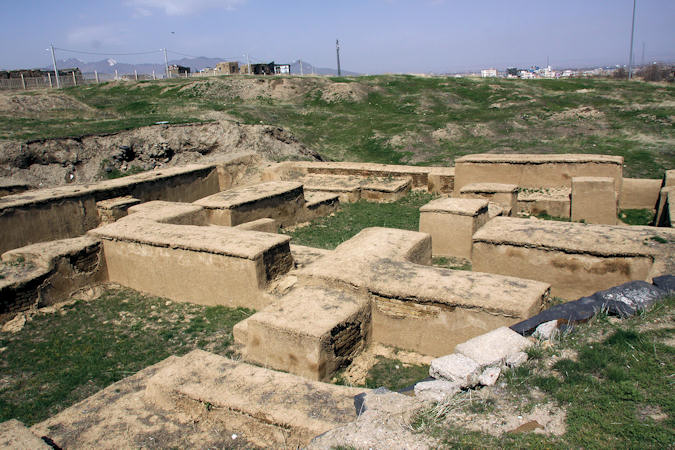 |
|||||
Ecbatana literally "the place of gathering"is believed to be in Hagmatana Hill, an archaeological mound in Hamedan.
According to Herodotus, Ecbatana was chosen as the Medes' capital in the late 8th century BC by Deioces (727-675 BC).
Under the Achaemenid Persian Kings (550–330 BC), Ecbatana, situated at the foot of Mount Alvand, became a summer residence.
Later, it became the capital of the Parthian Kings (247 BC–224 AD), at which time it became their main mint, producing drachm,
tetradrachm, and assorted bronze denominations. The wealth and importance of the city in the Persian empire is attributed to its location
on a crucial crossroads that made it a staging post on the main East-West highway.
The Tell Hagmatana, also called Tepe Hegmataneh has a circumference of 1.4 kilometres with an area of about 40 hectares and was
first excavated in 1913 by Charles Fossey. Excavations have been limited due to the modern town covering most of the ancient site.
There's a smart museum nearby, as well as two Armenian Churches, now part of Hamadan University.
Kermanshah
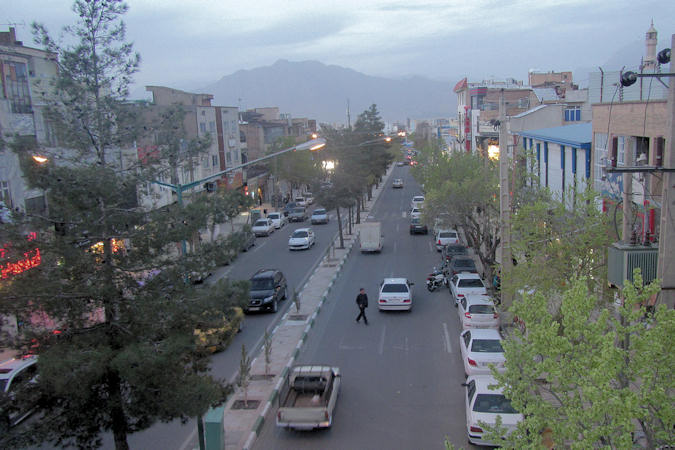 |
|||||
Kermanshah is located in the west of Iran and has a common border with Iraq. The city, originally founded by the Sasanids in
the 4th century AD, has little of historic or architectural interest, especially after constant Iraqi bombardment during the 1980's.
It seems that the stone-supports of the Kohneh Bridge were constructed during the Sassanids. It was reconstructed in its present
shape during the Safavids in the 17th century.
Temple of Anahita is located in the town of Kangovar, about 95 km east of Kermanshan.
This was the ancient Concobar of the 1st century BC., know for its temple to Artemis (the Greek version of the Zoroastrian
Anahita) and later for the palace of the Sasanid shah Khosrow II (590-628 AD).
Today the site is largely overgrown and there are no signs or a site map at the ticket office. The path from the ticket office leads to the
remains of the double staircase fronted by some re-erected colun shafts. A little bit further up, to the extreme left, is a good view on
the more recent excavations.
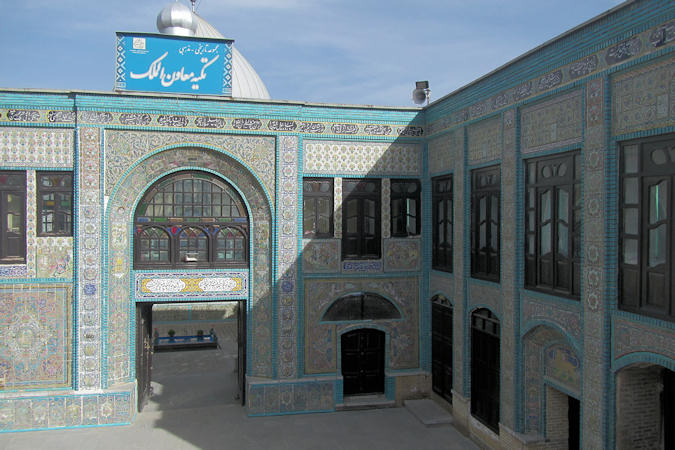 |
|||||
One of the most beautiful and magnificent religious relics that remained from the Qajar Period in Kermanshah is the Tekyeh
Moaven Al-Molk
It was originally built by Hossein Khan-e Moein Al-Raya and completed by Hassan Khan-e Moein Al-Molk.
It came into operation in 1903 to hold the mourning ceremony of the martyrdom of Imam Hussain and to commemorate the event of
Karbala.
Tekyeh is a traditionally designed place, where Shiite Muslims, particularly in Iran, gather to honor the bravery of the 3rd Shia
Imam and to mourn the months of Muharram and Safar regarding the Kerbala battle in 680 AD.
The mansion is mostly repudiated for its exceptional, rare, and in some cases, unique tile work. Most of these tile paintings present
Kerbela events, religious narratives, Quran tales, and Iranian national and epic stories.
The Behistun Inscription (meaning "the place of god") is a multilingual inscription and large rock relief on a cliff at
Mount Behistun about 46km east of Kermanshah, established by Darius the Great
(522–486 BC).
Authored by Darius the Great sometime between his coronation as king of the Persian Empire in the summer of 522 BC and his death in autumn
of 486 BC, the inscription begins with a brief autobiography of Darius, including his ancestry and lineage.
Later in the inscription, Darius provides a lengthy sequence of events following the deaths of Cyrus the Great (559–530 BC)
and Cambyses II (530–522 BC) in which he fought nineteen battles in a period of one year (ending in December 521 BC) to put
down multiple rebellions throughout the Persian Empire.
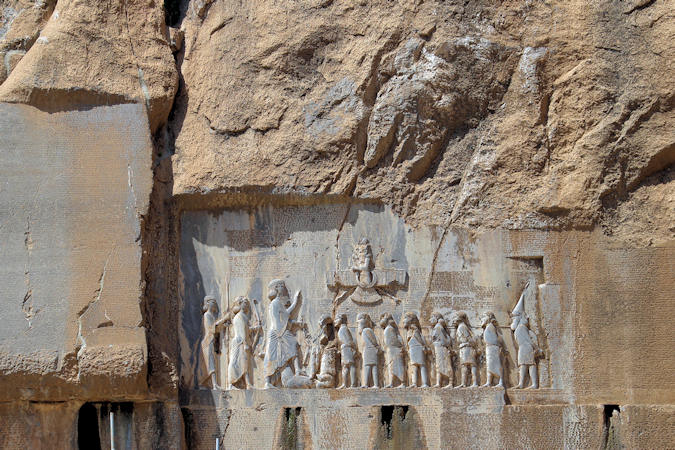 |
|||||
The inscription was illustrated by a life-sized bas-relief of Darius I, the Great, holding a bow as a sign of kingship, with his left foot
on the chest of a figure lying on his back before him. The supine figure is reputed to be the pretender Gaumata.
Darius is attended to the left by two servants, and nine one-meter figures stand to the right, with hands tied and rope around their necks,
representing conquered peoples. A Faravahar ("grace of Ahura Mazda") floats above, giving its blessing to the king.
Statue of Hercules was sculpted in 153 BC for a governor of the Seleucid Empire. Hercules is lying on a 2 m long platform and holds
a bowl in his left hand. He has put his right hand on his foot.
The Belâsh Stone is consisted of an irregular quadrilateral rock with some bumped figures carved on three sitedes of it.
The middle figure represents Parthian King Bâlas. (dating during the 1st and the 3rd century AD.)
Taq-e Bostan about 5 km from the city center of Kermanshah, meaning "Arch of the Garden" is a site with a series of large
rock reliefs from the era of the Sassanid Empire, carved around the 4th century CE.
The Investiture of Ardashir II is a rock relief of the crowning ceremony of Ardashir II
(379-383 AD) by his predecessor Shapur II
(309–379 AD).
The two main figures are standing on the fallen Roman emperor Julianus Apostata (361-363 AD).
The fourth figure is the god Mithra who holds a barsum in his hands and stands on a lotus flower. He is the protector of oaths and
is witness to this pact.
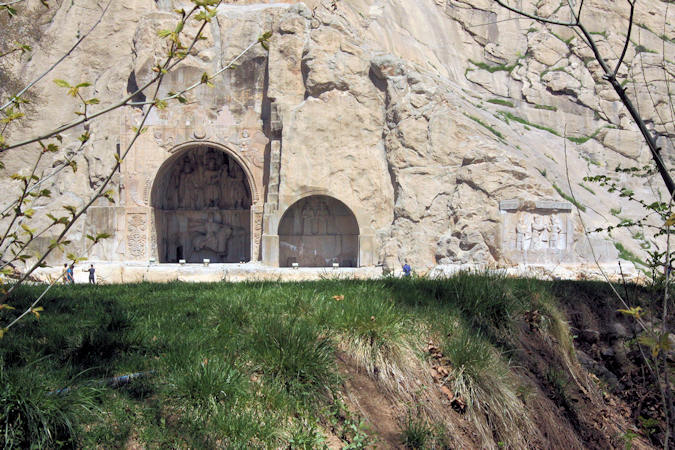 |
|||||
The small arch or "iwan" at Taq-e Bostan shows two kings, one of whom (the left one) is identified by an inscription as
Shapur III (383-388 AD).
He came to power after much struggle, and presents himself standing next to his grandfather Shapur II (309-379 AD), the great
conqueror who had defeated the Romans.
This representation is pretty original. Usual, a king showed that he was the lawful ruler by presenting himself as receiving power from
the gods.
The three figures on the back wall of the large "iwan" are usually considered to represent Khosrow Parviz (590-628 AD)
flanked by the supreme god Ahura Mazda and the water goddess Anahita.
They are placed above a mounted Persian knight, thought to be Khusrow himself riding his favourite horse, Shabdiz.
From the time of Cyrus the Great to the end of Sassanid period, hunting was one of the most favourite activities of Iranian kings.
Therefore, scenes of hunting are frequently found next to those of crownings.